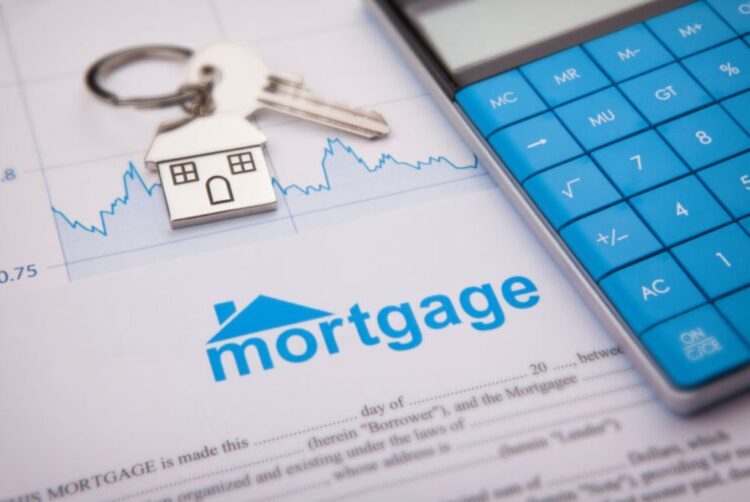When it comes to purchasing a property, you have two options: pay cash or take out a mortgage. Those who are wealthy enough can pay cash for their new house and call it theirs, while those who are not so fortunate must obtain a mortgage, complete a mountain of paperwork, and then some.
When it comes to getting money from the bank, or in this case getting a mortgage there are a set of rules that are a bit different from country to country or from state to state, depending on how you view it. The basic laws and principles are pretty much the same but there are a few things you need to know.

Today, we’ve chosen to teach you all you need to know about mortgage rates in Canada, as well as a little about mortgages in general, so you can get a better idea of what you can and can’t anticipate. Check out myperch.io/rates for additional information or a site where you may get expert guidance and services.
In its most basic form, a mortgage is a loan used to purchase a property, as we’ve already explained and as most of you are aware. When you talk about a mortgage, you’re referring to a loan that you use to purchase a home. Now, to figure out how much money you’ll need, take the purchase price of your home, minus your down payment, and the result is the amount of money you’ll need for a mortgage. The visual aspect of this would be as follows:
$500,000.00 – $50,000.00 = $450,00.00

This is all very simple, but whenever there are loans, banks, loaners or similar involved, things get a tad bit complicated. Let’s try to explain that as well. If you are going to put less than 20% down, you need something that is called mortgage insurance. When it comes to Canada, this type of insurance is offered by three different companies – CMHC the biggest, most popular one and the government-backed one; Sagen or formerly Genworth Financial and Canada Guarantee. Now it doesn’t matter which one you choose because they all do pretty much the same thing with very minor variations in their product and how they qualify people. The other thing to know is that you won’t need all this mortgage insurance nonsense if you are putting more than 20% down, but some lenders will do something called back insurance to ensure their entire portfolio and that you get the lowest possible interest rates.
Another thing that people get mixed up is who does that mortgage insurance protects?! Well, in the case you default on your mortgage that insurance you have paid is protecting your lenders instead of you. Whatever you do always keep that insurance in check especially if you are renewing your mortgage or if you are switching your lenders. This can be very important because your insurance is usually tied to lower interest rates. After all, this implies the bank is taking on far less risk. The bank faces the greatest risk in a mortgage when you put only 20% down and avoid mortgage insurance. This is why your interest rates are higher in this scenario, but as you move closer to that 35 percent down payment, things improve, and interest rates start to look more like what you’d pay on an insured mortgage.

Since our topic is regarding rates, let’s start explaining those a bit more. When it comes to rates you can usually get fixed or variable rates. As its name states fixed rate stays the same for the entire term of the mortgage, whereas variable rates are changeable and the rate of their change is tied to movements in the Bank of Canada’s key lending rate.
When it comes to fixed rates, you’ll almost certainly pay a higher price as a type of security premium, but you’ll also pay a greater penalty if you want to get out of the mortgage sooner because you agreed to keep it for a set length of time.
Variable-rate, on the other hand, is priced a lot lower and it will most likely save you money in the long term but the key downside of it is the risk of interest rates increasing over time. We should also mention that this downside is also mitigated by the fact that there are significantly lower penalties when you decide to switch to a different lender or to pay out the entire mortgage before it is due. With these types of rates, you should also know that when you are getting a five-year fixed mortgage, for instance, you are getting a five-year adjustable mortgage that is prone to adjustments in price every five years, and if interest rates go up you are eventually going to renew into higher interest rates anyways.

Variable rates are nearly always a better choice than fixed-rate mortgages, according to statistics. Aside from the sense of security that fixed rates provide, variable rates will almost certainly save you money in the long term, since the possibilities of your interest rate skyrocketing in a short period are quite low.
Now when considering all of this you have to consider one more thing – amortisation. Amortisation represents the amount of time you will need to pay off your mortgage entirely, and the max for insured mortgages is 25 years while the other ones are typically up to 30 years. Why is this important? Well, amortisation is what determines your payments, and the longer it is the lower your payments are. Now, this is probably the topic for another article and we will not go into too much depth regarding this.
The mortgage rates were the most significant component of our essay, and we hope we covered them thoroughly and clearly for all of you. If you’ve located your ideal house and need a mortgage to finance it, this article will explain what to anticipate from your lenders. Your mortgage type, down payment, amortization, and rates will be determined by your lenders and financial capability. Keep these things in mind, and if we were able to assist in any way, we are grateful! Best good luck to everyone!
The post What You Need to Know About Canadian Mortgage Rates appeared first on FotoLog.
from FotoLog https://ift.tt/VlKmWYR
via IFTTT


0 Comments